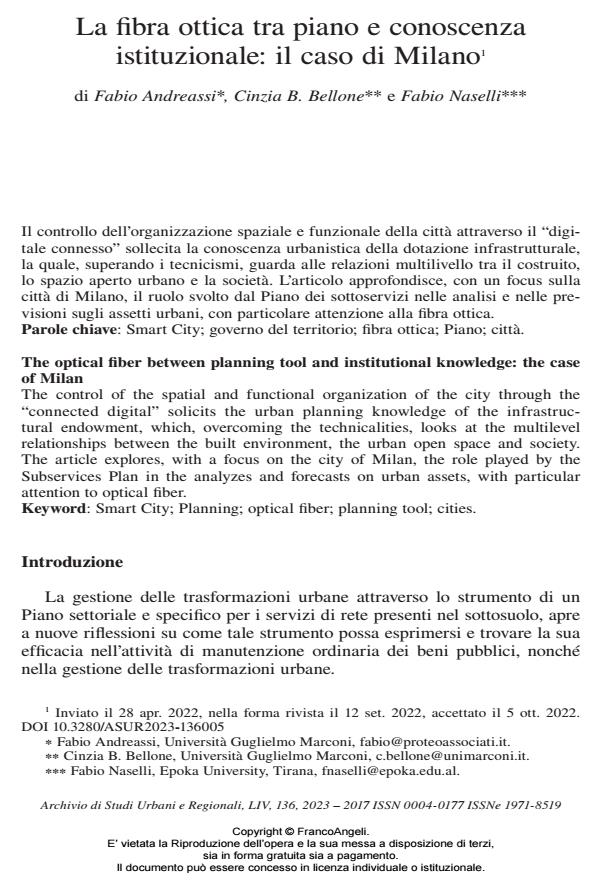The optical fiber between planning tool and institutional knowledge: the case of Milan
Journal title ARCHIVIO DI STUDI URBANI E REGIONALI
Author/s Fabio Andreassi, Cinzia B. Bellone, Fabio Naselli
Publishing Year 2023 Issue 2023/136
Language Italian Pages 23 P. 100-122 File size 203 KB
DOI 10.3280/ASUR2023-136005
DOI is like a bar code for intellectual property: to have more infomation
click here
Below, you can see the article first page
If you want to buy this article in PDF format, you can do it, following the instructions to buy download credits

FrancoAngeli is member of Publishers International Linking Association, Inc (PILA), a not-for-profit association which run the CrossRef service enabling links to and from online scholarly content.
The control of the spatial and functional organization of the city through the "connected digital" solicits the urban planning knowledge of the infrastruc- tural endowment, which, overcoming the technicalities, looks at the multilevel relationships between the built environment, the urban open space and society. The article explores, with a focus on the city of Milan, the role played by the Subservices Plan in the analyzes and forecasts on urban assets, with particular attention to optical fiber.
Keywords: Smart City; Planning; optical fiber; planning tool; cities.
Fabio Andreassi, Cinzia B. Bellone, Fabio Naselli, La fibra ottica tra piano e conoscenza istituzionale: il caso di Milano in "ARCHIVIO DI STUDI URBANI E REGIONALI" 136/2023, pp 100-122, DOI: 10.3280/ASUR2023-136005